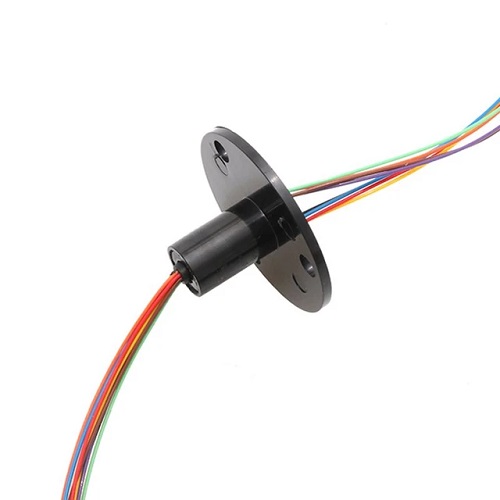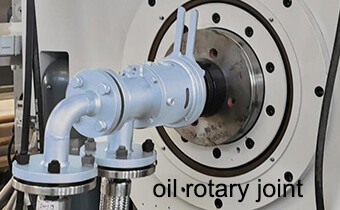Rotating joints are pivotal components in a wide array of machinery and equipment, enabling the transfer of fluids or gases while allowing rotation between connected parts. This article offers a detailed exploration of rotating joints, covering their types, core uses, user concerns, innovations, and practical tips for selection and maintenance. Whether you’re involved in industrial design, robotics, medical machinery, or simply curious about this essential mechanical component, this guide provides valuable insights.
Introduction to Rotating Joints
Rotating joints, sometimes referred to as rotary unions or swivel joints, stand as a cornerstone in the realm of mechanical engineering and design, facilitating the seamless transfer of fluids (be it liquid or gas) from a stationary system to a rotating part. This capacity to allow uninterrupted movement while maintaining a continuous flow of media is crucial in an array of applications, spanning from manufacturing machinery to medical devices, where precision and reliability are paramount. Their utility becomes apparent in scenarios requiring the conduction of steam, water, oil, or air through rotating interfaces, ensuring systems operate efficiently and effectively without leakage or performance degradation.
The exploration of rotating joints in this article is structured around several pivotal segments to provide a holistic understanding of their significance and versatility. First, we delve into the Types of Rotating Joints, where the distinction between mechanical seal, hydraulic, and pneumatic rotating joints is outlined, shedding light on the unique advantages each type brings to its respective field of application. This categorization not only underscores the diversity found within rotating joints but also emphasizes the tailored engineering solutions developed to meet specific operational demands.
Following the examination of types, we transition to the Rotating Joints Core Uses and Applications, showcasing the broad spectrum of sectors that incorporate these components into their foundational operations. From the intricate workings of industrial machinery to the critical functionalities of medical equipment, and the dynamic movements of robotics, the applications are as varied as they are impactful, demonstrating the indispensable nature of rotating joints in modern technology and everyday applications.
Addressing the concerns and considerations of users, the article progresses into discussing Durability and Lifespan, Maintenance Requirements, Leakage and Sealing Solutions, Compatibility and Integration, and Cost Implications. These sections are dedicated to illuminating the common challenges faced by users, offering insights into maintenance practices, advancements in sealing technologies, and strategies for optimizing cost-efficiency and operational longevity. This guidance is aimed at aiding users in navigating the complexities associated with selecting and maintaining rotating joints, ensuring their investments yield maximum utility and performance.
Culminating the discussion, the article ventures into the future with Rotating Joints Innovations and Future Developments. Highlighting advances in materials science, the integration of smart technologies, and the push towards environmentally friendly and efficient design innovations, this segment captures the evolving landscape of rotating joints. The directionality of these developments speaks to a broader commitment within the field to enhance durability, reduce environmental impact, and embrace the potential of digitalization and customization.
By traversing the domains of types, applications, user concerns, and future trajectories, this introduction sets the stage for a comprehensive exploration of rotating joints. It aims to equip readers with the necessary knowledge and perspectives to appreciate the complexities, appreciate the innovations, and navigate the considerations intrinsic to the successful implementation and utilization of rotating joints across various sectors.
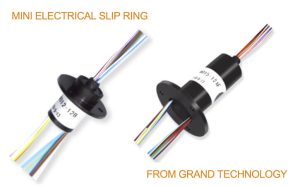
What Are Rotating Joints Used For?
Rotating joints, also known as rotary joints or swivel joints, are mechanical devices used in various applications to allow rotation between parts while maintaining a connection. Here are some common uses:
- Industrial Machinery: They enable the transfer of fluids (liquids or gases) between stationary and rotating parts in machinery, such as in hydraulic systems, where they help in transmitting hydraulic fluid to moving parts.
- Robotics: In robotic arms and other automated systems, rotating joints provide the necessary flexibility and range of motion, allowing the arms to rotate and move freely in multiple directions.
- Manufacturing: In assembly lines and manufacturing processes, rotating joints are used in rotary tables and indexing mechanisms, facilitating the precise rotation and positioning of components.
- Automotive Industry: They are used in various automotive components, including steering systems and suspension systems, to allow for smooth rotation and movement.
- Aerospace: Rotating joints are crucial in aerospace applications, such as in the joints of aircraft landing gear and in the moving parts of spacecraft.
- Medical Equipment: In medical devices, such as surgical robots and imaging equipment, rotating joints provide the necessary articulation and movement.
- Energy Sector: In wind turbines and other renewable energy systems, rotating joints are used to allow the rotation of blades or other components while maintaining a fluid or electrical connection.
- Pipeline Systems: They are used in pipeline systems to allow for the rotation of pipes and hoses without causing wear and tear, ensuring a reliable flow of fluids.
Rotating joints are essential components in many systems, enabling rotational movement while maintaining functionality and efficiency.
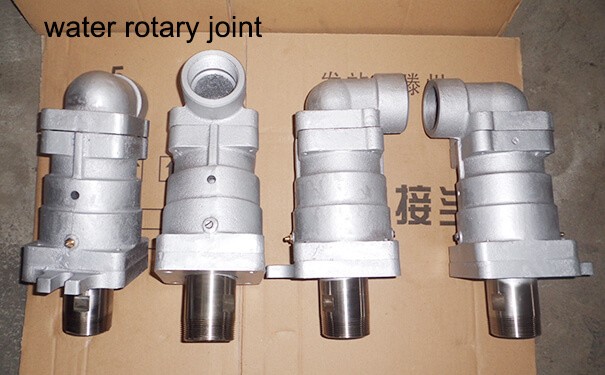
Types of Rotating Joints
The landscape of rotating joints is as diverse as the applications they serve, with each type crafted to cater to unique operational needs. The ingenuity of design becomes evident as we examine three notable types: mechanical seal rotating joints, hydraulic rotating joints, and pneumatic rotating joints. Though unified in their core purpose – facilitating the transfer of media within rotating systems – these categories differ crucially in their design elements and ideal field of application.
Mechanical Seal Rotating Joints
Mechanical seal rotating joints are the linchpin in applications requiring the transfer of liquid media. Key in their design is the utilization of mechanical seals, which act as a barrier preventing leakage along the rotating axis. This type of joint is cleverly engineered to maintain a sturdy, leak-proof connection even under changing pressure and temperature conditions. Therefore, their application is widespread in industries that involve cooling cylinders, air clutches, or braking systems, where maintaining an unbroken, high-pressure liquid flow is vital. The principal advantage of mechanical seal rotating joints is their tested reliability against leakage, rendering them indispensable in precision-critical applications, where even minor leaks could lead to significant performance degradation or operational hazards.
Hydraulic Rotating Joints
The prowess of hydraulic rotating joints lies in their capability to transfer hydraulic fluid under substantial pressure. These joints are typically more robust and durable as they are designed to function efficiently even under high-pressure conditions, making them ideal for heavy-duty industrial applications such as construction equipment, hydraulic cylinders, and wind turbines. The key to their efficiency lies in their ability to withstand pressure extremes without succumbing to wear, leading to their primary edge: an extended lifespan relative to other rotating joints, especially in high-stress, high-pressure environments.
Pneumatic Rotating Joints
When it comes to transferring air or gas, pneumatic rotating joints stand out. Characteristically, these are lighter compared to hydraulic rotating joints and are capable of high rotational speeds, suiting them optimally for use in pneumatic systems engaged in high-speed automation and assembly processes. Their high-speed capability and ease of maintenance, coupled with a comparatively lower cost, make them a preferred choice for sectors focused on speed and efficiency, such as automated packaging, textile industries, and industrial automation.
As we navigate this dynamic spectrum of rotating joints, the prominence of purpose-centric design becomes abundantly clear. Whether it’s the leak-proof performance of mechanical seal rotating joints, the durable high-pressure handling of hydraulic rotating joints, or the high-speed efficiency of pneumatic rotating joints, the distinct advantages of each type of root are in their specialized design. Understanding these nuances is crucial in determining an optimal choice for specific applications, thus effectively harnessing the strengths of these mechanical marvels.
Rotating Joints Size
Rotating joints, or rotary unions, come in a wide range of sizes and configurations to suit various industrial applications. Let’s delve into the specifics of these joints, including their sizes and relevant factors:
Small-Scale Rotating Joints
Applications: Precision instruments, small robotics, medical devices.
- Diameter: Typically range from 5mm to 25mm.
- Load Capacity: Light loads, typically under 100 kg.
- Pressure Ratings: Often designed for low to moderate pressure, up to 50 bar (725 psi).
- Rotational Speed: Can handle high rotational speeds, often exceeding 10,000 RPM.
Example: A miniature rotary joint used in a small robotic arm might have a diameter of 10mm, support rotational speeds of 15,000 RPM, and handle pressures up to 10 bar (145 psi).
Medium-Scale Rotating Joints
Applications: Industrial machinery, automotive systems, medium-sized robotic arms.
- Diameter: Typically range from 25mm to 100mm.
- Load Capacity: Can support moderate loads, up to 1,000 kg.
- Pressure Ratings: Designed for moderate to high pressure, up to 100 bar (1,450 psi).
- Rotational Speed: Generally supports speeds up to 5,000 RPM.
Example: A rotating joint used in an automotive manufacturing line might have a diameter of 50mm, support speeds of 3,000 RPM, and handle pressures up to 50 bar (725 psi).
Large-Scale Rotating Joints
Applications: Heavy industrial machinery, pipelines, wind turbines.
- Diameter: Typically range from 100mm to over 1 meter.
- Load Capacity: Can support heavy loads, exceeding 10,000 kg.
- Pressure Ratings: Designed for high-pressure applications, up to 200 bar (2,900 psi) or more.
- Rotational Speed: Typically supports lower speeds, up to 1,000 RPM.
Example: A rotating joint in a wind turbine might have a diameter of 500mm, support rotational speeds of 100 RPM, and handle pressures up to 150 bar (2,175 psi).
Design Considerations
- Materials: Rotating joints are often made from materials like stainless steel, carbon steel, brass, or specialized alloys to withstand various environmental conditions and fluid types.
- Sealing Mechanisms: Effective sealing is crucial to prevent leaks. Common seals include O-rings, lip seals, and mechanical seals, chosen based on the fluid type and pressure requirements.
- Bearings: High-quality bearings are essential for smooth rotation and longevity. Bearings may be ball bearings, roller bearings, or other types, depending on the load and speed requirements.
- Connection Types: Rotating joints can have various connection types, such as threaded, flanged, or quick-connect fittings, to suit different installation needs.
- Temperature Range: Some applications require joints to operate in extreme temperatures, from cryogenic conditions to high-heat environments, necessitating specialized materials and designs.
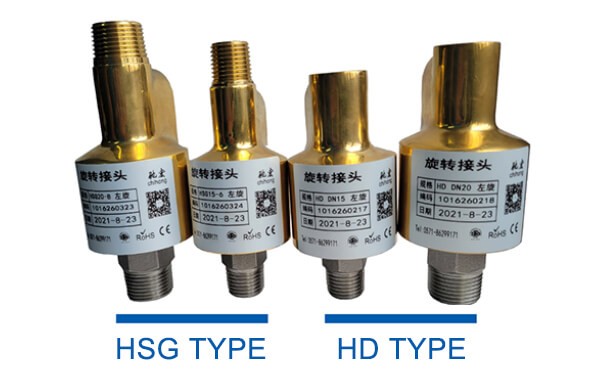
Specific Examples
- Hydraulic Rotating Joint:
- Size: Diameter of 50mm.
- Load Capacity: 500 kg.
- Pressure Rating: 70 bar (1,015 psi).
- Rotational Speed: 2,000 RPM.
- Material: Stainless steel with nitrile rubber seals.
- High-Speed Air Rotating Joint:
- Size: Diameter of 25mm.
- Load Capacity: 50 kg.
- Pressure Rating: 10 bar (145 psi).
- Rotational Speed: 20,000 RPM.
- Material: Aluminum with PTFE seals.
- Heavy-Duty Pipeline Rotating Joint:
- Size: Diameter of 1,000mm.
- Load Capacity: 20,000 kg.
- Pressure Rating: 150 bar (2,175 psi).
- Rotational Speed: 50 RPM.
- Material: Carbon steel with Viton seals.
Rotating joints are versatile components crucial in many industrial applications. Their sizes and specifications are highly dependent on their intended use, with considerations for load capacity, pressure ratings, rotational speed, and environmental conditions guiding their design and selection.

Rotating Joints Core Uses and Applications
Rotating joints serve as the unsung heroes in a vast array of sectors, quietly but crucially facilitating the seamless interplay between movement and functionality. Their applications range from the floors of high-stakes industries to the confines of household living, illustrating their pervasive and versatile nature. Let’s delve deeper into the specifics of how rotating joints are utilized across different domains.
Industrial Applications
In the industrial arena, rotating joints are pivotal to the smooth operation of various machinery and systems. Their role is especially pronounced in machining and manufacturing processes, where precision and efficiency are paramount. For example, in CNC machines, rotating joints allow for the uninterrupted flow of coolant to the cutting site, thereby enhancing tool life and part quality. Similarly, in the realm of automation, they enable the transfer of fluids and gases in automated painting systems or assembly lines, ensuring consistent operation without the need for frequent halts or maintenance. Their durability and reliability make them indispensable in sustaining the high-speed, high-volume production that modern industries demand.
Medical Equipment
The precision and reliability that define rotating joints find critical applications within the medical sector, particularly in advanced imaging devices and surgical tools. For instance, in MRI machines, rotating joints facilitate the transfer of helium for cooling the magnets, all while sustaining the equipment’s ability to rotate, which is vital for producing detailed images of the body’s interior. Surgical tools, especially those employed in minimally invasive procedures, similarly benefit from compact rotating joints that allow for enhanced flexibility and precision, enabling surgeons to perform complex movements with minimal incisions. The contribution of rotating joints here transcends operational efficiency, directly impacting patient care and outcomes.
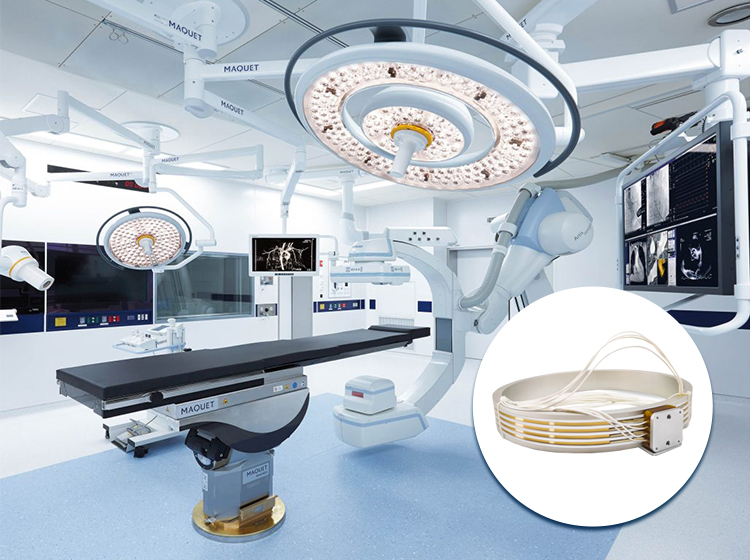
Robotics
The integration of rotating joints in robotics has opened new horizons in terms of flexibility, efficiency, and capability. In robotic arms used across manufacturing, assembly, or even surgical applications, rotating joints facilitate a degree of movement that closely mimics the human arm, allowing for precise, multi-directional tasks to be performed with ease. Mobility systems in robots, including those designed for exploration or logistics, rely on rotating joints for seamless navigation and operation, ensuring smooth transitions between movements and the ability to operate in diverse environments. This flexibility and adaptability make rotating joints a cornerstone in the development and functionality of robotics.
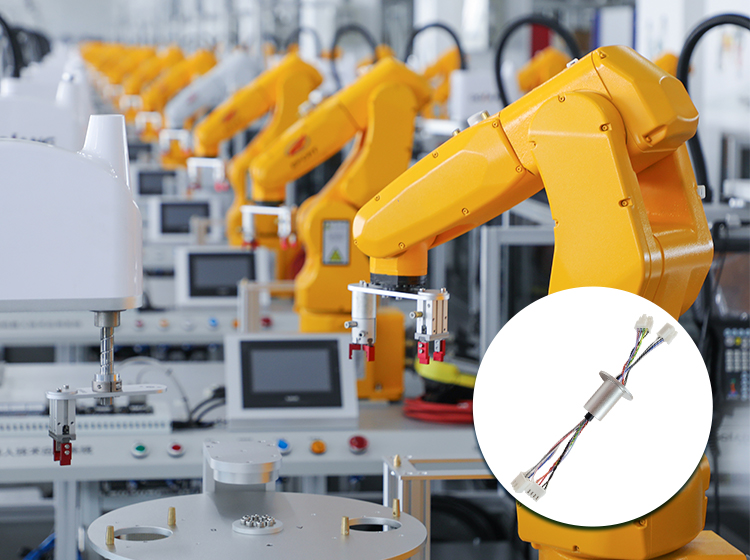
Everyday Applications
Beyond the realms of industry, medicine, and robotics, rotating joints find their way into numerous everyday applications, underscoring their ubiquity and importance. In the automotive sector, for instance, steering systems and drive shafts incorporate rotating joints to provide smooth operation and handling. At home, rotating joints are embedded in a variety of gadgets and appliances, from rotating sprinkler systems that ensure even water distribution in gardens to swivel chairs that offer enhanced mobility and comfort. These examples reflect the integrated role of rotating joints in enhancing functionality and convenience in daily life.
The scope of rotating joints’ applications reflects not only their technical versatility but also their impact on efficiency, performance, and innovation across sectors. From industrial machinery that powers production lines to medical devices that save lives, from robots that expand the possibilities of automation and exploration to everyday gadgets that enrich our daily experiences, rotating joints prove to be indispensable in bridging movement with functionality.
Selection Considerations of Rotating Joints
Rotating Joints Installation Tips
The selection and installation of rotating joints are cornerstone processes that define the performance and longevity of such critical components. Understanding the specifications, adhering to installation best practices, and having the acumen for troubleshooting common issues are integral to this process. This section provides an overview of the vital strategies for rotating joint selection and installation.
Understanding Specifications
Understanding and adhering to a rotating joint’s specifications is pivotal to ensuring its efficient operation and durability. It’s of utmost importance to take into account the pressure ratings, temperature ranges, and rotational speed limits of the joint. These parameters should align with the operational conditions it is expected to endure.
- Pressure Ratings: The rotating joint should be rated to withstand the maximum pressure of the fluid or gas it will handle. Using a rotating joint below its pressure rating can lead to premature failure and possible safety hazards.
- Temperature Ranges: The joint should be able to operate within the temperature extremes of the intended application. Failures can occur if the joint operates outside its rated temperature range due to material degradation or seal failure.
- Rotational Speed Limits: The ability of the joint to transfer mediums while rotating at specified speeds should conform to operational needs. Exceeding these limits can lead to increased wear, reduced service life, and potential failure.
Installation Best Practices
Applying best practices during the installation of a rotating joint can greatly influence its performance and lifespan.
- Proper Alignment: Misalignment during installation can lead to uneven wear and potential leak points. Using aids, such as laser alignment tools, can ensure accurate alignment.
- Adequate Space: Leaving sufficient space for maintenance access ensures that routine inspections or part replacements can be carried out with minimal system disturbances.
- Protective Measures: Following protective measures like wearing gloves during installation can avoid introducing contaminants that might affect system performance.
- Following Manufacturer’s Instructions: Detailed guidance from the manufacturer, such as torque settings for fasteners or instructions for seal placement, should be strictly adhered to.
Troubleshooting Common Issues
Despite careful selection and rigorous installation strategies, some issues might occur in the lifecycle of a rotating joint. Knowledge of how to troubleshoot common problems is vital.
- Leaks: Promptly address leaks by checking seal conditions. They may occur due to worn-out seals or excessive system pressure and might require seal replacement or pressure adjustments.
- Unusual Noises: Unusual noises may indicate parts rubbing together due to misalignment or wear. Inspect the joint and address the root cause to prevent further damage.
- Decreased Performance: A drop in performance can result from clogging, worn parts, or system pressure issues. Regular maintenance and inspection can diagnose and rectify the root cause.
By paying careful attention to these three aspects: understanding specifications, following installation best practices, and honing troubleshooting skills, users can ensure the optimal performance and longevity of their rotating joints. This, in turn, results in prolonged system uptime, reduced maintenance costs, and higher operational efficiency.
Rotating Joints User Concerns and Considerations
As users incorporate rotating joints into their systems, a spectrum of concerns and considerations arises. Each aspect plays a key role in the overall satisfaction with the performance and the cost-effectiveness of their investment. Addressing these facets head-on helps users make informed decisions and manage the lifecycle of the rotating joints more strategically.
Durability and Lifespan
The durability and lifespan of rotating joints hinge on multiple factors, such as material quality, operating conditions, installation accuracy, and proper sizing. Users must ascertain that the material selection corresponds with the medium being transferred to prevent corrosion or erosion-related wear. Operating conditions such as pressure, temperature, and rotational speed directly impact longevity; thus, selecting rotating joints rated for specific service conditions is paramount. Improper installation can lead to misalignment, causing premature wear, while incorrect sizing can result in either excessive stress or inadequate sealing. Users should ensure that the rotating joints not only fit their immediate needs but are also robust enough to handle potential future changes in operation.
Maintenance Requirements
Rotating joints typically demand regular maintenance to ensure their operational integrity. Maintenance routines might include periodic inspections, lubrication, and seal replacements. Users should follow the manufacturer’s maintenance schedule to ensure longevity, while also remaining vigilant for signs of wear or leaks, which could signal the need for preemptive maintenance. One vital tip for maintenance prolongation is to ensure that the medium being transferred is clean and free of any particulates that might cause abrasion or clogging within the joint.
Leakage and Sealing Solutions
Leakage remains one of the most common issues associated with rotating joints, often stemming from seal wear, improper installation, or even material degradation due to harsh media. Recognizing the challenges, there have been advancements in sealing technologies, such as the adoption of cartridge seals that offer simpler replacement procedures, or the use of more resilient materials suitable for extreme environments. Users should stay abreast of these advancements and consider retrofits or upgrades where necessary to curb potential leak issues.
Compatibility and Integration
Ensuring compatibility with existing systems is critical to the successful integration of rotating joints. This includes compatibility with the media being transferred, the connection sizes, and the mechanical load capabilities. Incompatibilities can lead to joint failure, system inefficiencies, or even safety hazards. Careful evaluation of specifications and consultation with manufacturers can help ensure that the rotating joints are appropriately matched with the system components that they will interface with.
Cost Implications
The costs tied to rotating joints extend beyond their initial purchase price. Users should factor in the cost of installation, potential downtime during maintenance, and the impact of an unexpected failure. Opting for cheaper alternatives might lead to higher costs over time due to increased maintenance requirements, reduced lifespan, or even catastrophic system failures. A cost-effective approach should consider the total cost of ownership, factoring in the service life, reliability, and efficacy of the rotating joints over their operational lifecycle.
Navigating these concerns requires a proactive approach to selecting, maintaining, and upgrading rotating joints. Users should leverage a combination of supplier expertise, meticulous planning, and ongoing vigilance to maximize the performance and cost-effectiveness of their rotating joint investments.
Seeking High-Performance Rotating Joints? Get in Touch Today!
Rotating Joints Innovations and Future Developments
The developmental trajectory of rotating joints is, to a significant degree, getting redefined by contemporary technological advancements. Innovations in materials science, smart technology integration, customization, and environmental considerations reflect a growing commitment to more robust, intelligent, and sustainable solutions. Let’s explore these cutting-edge advancements which are set to revolutionize the realm of rotating joints.
Materials Science
The quest for materials that can offer improved durability and reduced friction has been transformative for rotating joints. Development in materials science has led to the application of novel alloys and composite materials that are significantly more resistant to wear and corrosion. For instance, the advent of self-lubricating materials such as polymer composites has drastically minimized friction, leading to smoother operation and fewer maintenance requirements. Additionally, surface treatments and coatings are becoming increasingly sophisticated, yielding surfaces that can withstand the harsh conditions found in extreme environments. These material advancements are not only enhancing the longevity of rotating joints but also pushing the envelope on what these components can endure.
Smarter Rotating Joints
Smart technology integration into rotating joints is paving the way for enhanced monitoring and predictive maintenance capabilities. Through the incorporation of sensors and IoT (Internet of Things) technologies, rotating joints can now provide real-time data on their performance, including wear levels, temperature fluctuations, and operational anomalies. This connectivity allows for the predictive analysis of maintenance needs, enabling preemptive action to be taken before failures occur. Not only does this minimize downtime but it can also extend the overall lifespan of the equipment. As smart technologies evolve, we can expect rotating joints to become progressively more reliable and intuitive to user needs.
Customization and Modular Designs
The trend toward customization and modular designs in rotating joints is in response to the growing complexity and specificity of user requirements. Today, there’s an increasing demand for tailor-made solutions that can conform precisely to unique operational parameters. Manufacturers of rotating joints are responding with modular designs that allow for different configurations and easy adaptation to a diversity of applications. Users can select specific materials, seals, and couplings that best fit their needs, enabling more efficient and effective performance. This flexibility not only simplifies integration and upgradability but also opens the door to unprecedented levels of precision in component design.
Environmental and Efficiency Considerations
Finally, environmental sustainability and operational efficiency have become significant drivers in the development of rotating joints. As industries adopt greener practices, there is a push for rotating joints that minimize environmental impact through improved efficiency and reduced resource consumption. Some joints are designed to function with less energy and lower quantities of lubricants, while others are being built to accommodate eco-friendly media. In addition, the recycling of joint components and the use of environmentally friendly materials are being considered to reduce waste and carbon footprint. By focusing on efficiency and environmental stewardship, manufacturers are ensuring that rotating joints contribute positively to both the bottom line and the health of the planet.
As we witness these innovations and developments in the field of rotating joints, it becomes increasingly clear that their future is one of convergence — where durability, intelligence, customization, and environmental considerations meet to create more sophisticated and sustainable rotating systems.
Conclusion
Rotating joints are indispensable in numerous applications, implicit in the smooth operation of machinery and systems across sectors. With ongoing advancements in technology and materials sciences, these components continue to evolve, lifting performance standards and reliability. Awareness and adaptation of these innovations, alongside mindful maintenance, can profoundly impact the efficiency and longevity of equipment reliant on rotating joints.
FAQs about Rotating Joints
Q: How do I choose the right rotating joint for my application?
A: Understand the media being transferred, the operational environment, pressure, and temperature requirements to select a suitable joint.
Q: What are the signs that a rotating joint needs maintenance or replacement?
A: Signs include unusual noises, leaks, or a drop in performance, indicating wear or damage.
Q: Can rotating joints be repaired, or do they need to be replaced entirely?
A: Some joints can be repaired, depending on the extent of the damage and wear. Consult with the manufacturer for repair kits or advice.
Q: What are rotating joints, and how do they work?
A: Rotating joints, also known as rotary unions or swivels, are mechanical devices designed to transfer fluid (liquid or gas) from a stationary source to a rotating part. They consist of a stationary input (or housing) and a rotating component connected to the machinery. Seals inside the joint prevent leakage while allowing the two sections to rotate independently. This enables machinery parts to move freely while maintaining a continuous flow of media necessary for operation.
Q: Why is it important to consider the pressure rating of a rotating joint?
A: The pressure rating of a rotating joint indicates the maximum internal pressure it can withstand. It’s crucial to select a joint with a pressure rating that exceeds the system’s maximum operating pressure to prevent leaks, wear, and potential failures. A correctly rated joint ensures safe operations, maintains the integrity of the fluid or gas transfer, and minimizes the risk of catastrophic failure that could endanger workers and machinery.
Q: How can incorrect installation of rotating joints affect their performance?
A: Incorrect installation of rotating joints can lead to several issues, including leaks, premature wear, and alignment problems. If a joint is misaligned, it can exert unequal forces on the bearings and seals, leading to uneven wear and eventual failure. Improper installation might also cause excessive vibration, reducing the joint’s lifespan and efficiency. Therefore, following the manufacturer’s installation guidelines and using proper tools and techniques is essential for optimal performance.
Q: What maintenance routines are recommended for rotating joints?
A: Regular maintenance routines for rotating joints typically include inspection, cleaning, and lubrication. Inspecting the joints for signs of wear, leaks, or damage should be a regular procedure, ideally during scheduled downtimes. Cleaning the joint and its surrounding area prevents the accumulation of debris that could enter the joint and cause internal damage. Lubricating the seals and bearings, as specified by the manufacturer, reduces friction and wear, extending the life of the joint. Following a comprehensive maintenance schedule can prevent unexpected failures and prolong the operational lifespan of rotating joints.
Q: How do you troubleshoot leaks in a rotating joint?
A: To troubleshoot leaks in a rotating joint, begin by inspecting the seals and gaskets for wear or damage, as these are the most common sources of leaks. Reviewing the application parameters, such as pressure and temperature, to ensure they fall within the joint’s rated specifications is crucial. If the seals are worn or damaged, replacing them and ensuring correct installation should resolve the leak. In some cases, leaks may indicate a more severe issue like misalignment or bearing failure, requiring a more comprehensive inspection and potential repair or replacement of the joint.
See What We Can Do


